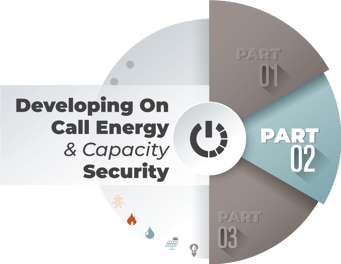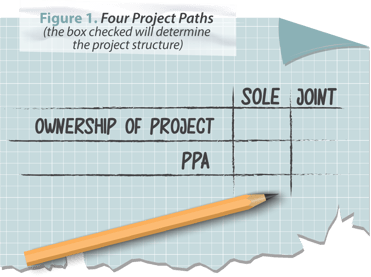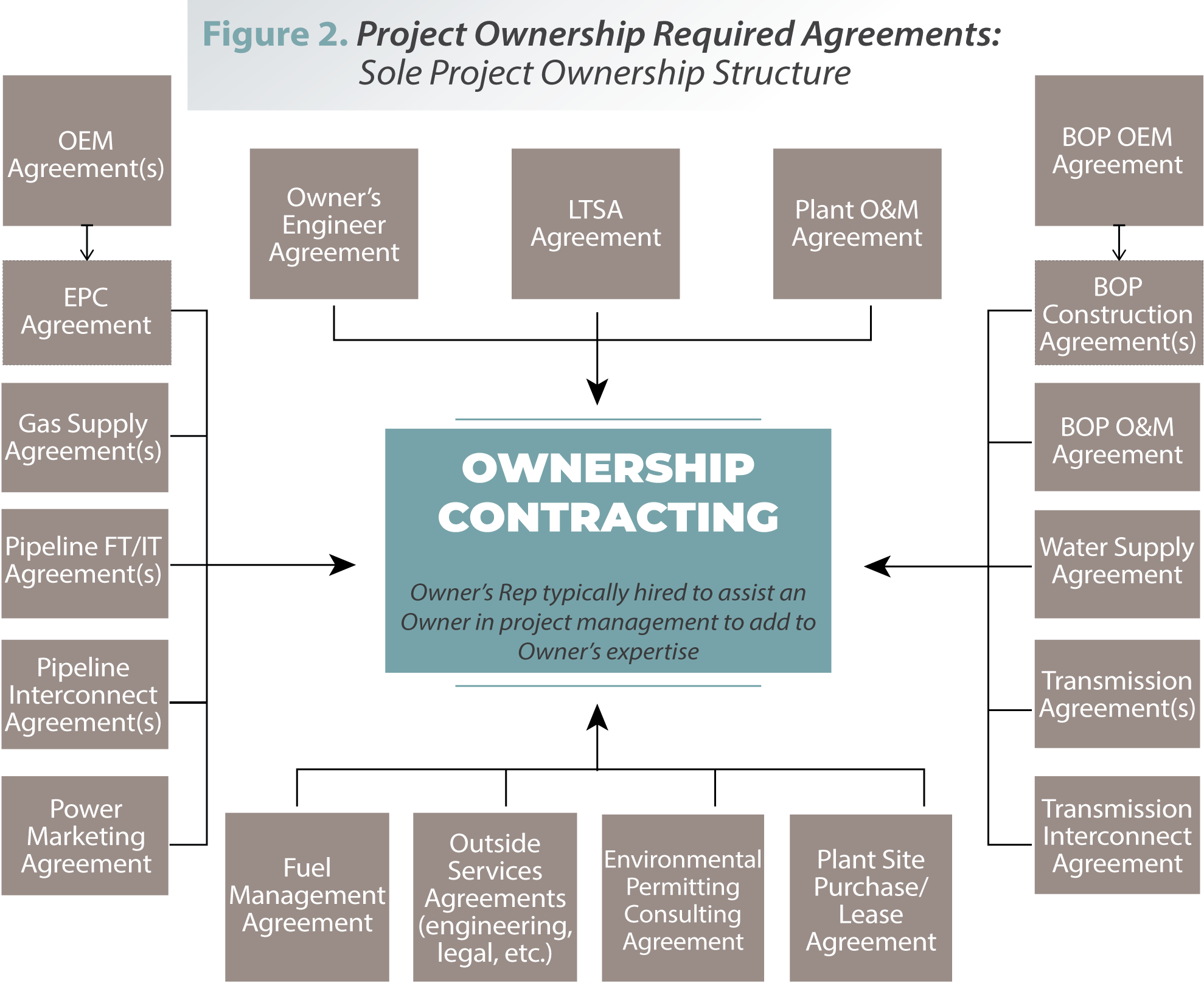- Home
- Services
- Hi-Line Engineering
- About
- Careers
- Contact
- Requests For Proposals
Developing On Call Energy & Capacity Security - Part 2
by GDS Associates, Inc | July 17, 2023 |
 This article is the second of a three-part series. Part 1 introduced the need for industry proven power project development and asset management processes that can be utilized by organizations to effectively develop, own, and manage natural gas fired generation resources or to do the same via a power purchase agreement. Part 1 detailed the phases of power project development and discussed the required implementation functions needed to successfully develop the project.
This article is the second of a three-part series. Part 1 introduced the need for industry proven power project development and asset management processes that can be utilized by organizations to effectively develop, own, and manage natural gas fired generation resources or to do the same via a power purchase agreement. Part 1 detailed the phases of power project development and discussed the required implementation functions needed to successfully develop the project.
DEVELOPMENT STRATEGY DETERMINES PROJECT STRUCTURE
A project’s development strategy will determine the organizational approach or project structure that will be required to implement the project. Projects can be pursued individually or jointly and through either ownership or power purchase agreement (PPA) approaches, resulting in four possible paths. The resulting structures will generally include the same types of technical and commercial resources, but the level of engagement of these resources will differ. 
A project ownership strategy, sole or jointly, will require a higher level of resource engagement and time commitment than an o -taker strategy under a power purchase agreement. In a PPA scenario, depending upon the term and ongoing resource planning, some degree of internal resource capabilities or outside services should be in place to proactively track and manage the contract and as needed ongoing asset-based power supply decisions. A long term PPA for a power project to be developed will have greater complexity than a shorter term PPA from an existing power plant.
This article will focus on sole project ownership and the third article in the three-part series will explore joint ownership, saving PPA arrangements for another time.
SOLE PROJECT OWNERSHIP
Power project development requires the same types of technical and commercial support regardless of the development strategy. But a sole ownership and development strategy and structure will require a higher level of resource engagement and commitment. This concept is best illustrated by noting the various agreements that will need to be sourced, negotiated, and administered to complete the power project’s development and eventual operation (Figure 2). The remainder of this article will emphasize four major areas of focus: project management, engineering/technical focus areas, support focus areas, and incremental internal staffing. 
PROJECT MANAGEMENT
It is best practice for an owner not experienced in power project development and with limited internal project development resources, to engage an owner’s representative to assist the owner’s project development team. Critical owner’s representative qualifications not only include experience in all the development contracting and implementation activities mentioned in Part 1, but also experience in providing this assistance to an owner with limited internal expertise. The owner’s representative can also assist in developing the project’s overall risk management plan and project risk register. After the commercial operation date (COD), the project management functions will unwind, and the focus will shift to an operations management function.
ENGINEERING/TECHNICAL AREAS
There are several areas of Figure 2 that are of an engineering or technical aspect for which outside support may be appropriate. These areas include engineering and construction, fuel and energy management, transmission and compliance, and plant operations and maintenance.
ENGINEERING & CONSTRUCTION: Power project best practices require the formal engagement of an owner’s engineer under an ownership strategy where an engineering, procurement, construction (EPC) contract or a developer arrangement is to be bid. The support of this resource is usually required by lenders. Depending upon the project development strategy, the owner’s engineer will develop and oversee the project’s specifications, performance, and engineering documents that will be relied on to support the array of bidding packages, especially the EPC or developer request for proposals (RFP), in addition to balance of plant, permit lings, loan application, and regulatory approvals. The owner’s engineer will also work closely with the project team and legal resources engaged to support the EPC contracting negotiation efforts.
The owner’s engineer role is primarily an “inside the fence” function, meaning those resources will govern the project’s technical requirements associated with the plant that exist within the plant footprint or fence. However, the owner’s engineer will actively collaborate with all other subject matter experts.
Post commercial operation date (COD), the owner’s engineer should continue to play a role in the operations and performance of the plant. The experience of the owner’s engineer during plant development and construction will be valuable knowledge to be leveraged during the initial operating years so carryover of some of the development and construction personnel should be planned.
FUEL AND ENERGY MANAGEMENT: Given the importance of natural gas transportation capacity acquisition, an experienced fuel consultant that has related power project development experience should be retained. This effort will necessitate focus on pipeline sourcing and engagement, FEED studies, rates and regulatory, pipeline open seasons, contracting, and construction. Prior to the project being completed, a contracted energy manager may need to be sourced and contracted to administer the project’s fuel supply and transport contracts along with the plant’s energy scheduling and dispatch.
TRANSMISSION AND COMPLIANCE: Depending on the project’s transmission capacity requirements and situation, an experienced transmission interconnect and services consultant may be needed to assist in the securing and implementation of the interconnection and transmission requirements and agreements. This assistance will include technical input, transmission modeling, and regulatory and NERC compliance issues. These services may be retained post project COD to assist in the operations management of the project’s transmission requirements.
PLANT OPERATIONS & MAINTENANCE: There are multiple providers of outsourced power plant operations and maintenance services contractors, so sourcing is not difficult, and selection can be bid or sole-sourced. The keys to a successful operation are contractor experience and the final negotiated terms of the plant operations contract. The level of liability acceptance by the contracted provider should be fully understood and defined. This resource should be engaged and fully contracted in sufficient time prior to COD to provide start up assistance and day-one operations support.
SUPPORT AREAS
There are several areas of Figure 2 that are less technical than the engineering functions but for which outside support is likely appropriate. These areas include environmental, funding, analysis, legal, and public relations.
ENVIRONMENTAL: A key resource needed early in the project is an environmental consulting firm that has power project experience and a local presence. Local presence comes with a thorough understanding of the power project permitting requirements and a working relationship with the state’s permitting agency. The engaged environmental consulting firm will also be a key participant in the development of an EPC contract. This resource will likely remain engaged, though to a lesser degree, to support permitting compliance and other environmental issues during post COD plant operations.
FUNDING: A consultant experienced in obtaining funding sources and arranging financing for power generation projects should be added to the development team, particularly one familiar with the anticipated source of funding. Seeking and obtaining funding can be a rigorous and time-consuming process. There will be funding implications from early in the project development phase to the eventual closeout of the EPC contract. This resource, along with legal, provides significant benefit by helping navigate the processes and streamlining the preparation and ultimate processing of the array of borrowing documents. The resource engaged to assist the project’s owner will unwind post COD and the organization’s financial function will rely on such support only as needed.
ANALYSIS: Expertise and experience with power project modeling, resulting life of project costs, and impact on the organization’s rates is required on the development team to maintain the project’s modeling and decision-making tools during the project’s development phases. A strong matrix reporting channel to the organization’s leadership to ensure the ongoing integrity of modeling and decision tool results is critical. After COD, similar expertise would be necessary to effectively audit the financial performance of the project and its expected cost and rate objectives.
LEGAL: To prepare the required project documents and agreements as shown in Figure 2, including the EPC RFP and contract or developer arrangement, legal resources that have power project development experience is a must. And depending on the source of the project funding, legal experience in both is very helpful to ensure the contract terms dovetail with the lending requirements. It is common for more than one law firm to be engaged during the development process given the various complex issues that arise in such a project. It is also beneficial to have local counsel near the project site to assist and help deal with local matters including site acquisition, neighboring landowners, local taxes and ordinances, and other related matters including relationships with area governing boards and officials. Local counsel can help source a real estate appraiser/broker that will assist with project siting and purchase of the project site. Post COD, best practices would be to retain the project’s outside legal resources to assist as needed in addressing project legal matters as they arise in the early years of the project’s operation.
PUBLIC RELATIONS: Outreach support in the form of an experienced local public relations consultant should be secured to manage the organization’s messaging related to the project. This function’s importance has grown in recent years and should be sourced sooner rather than later. Post COD, outreach support will be needed to assist in area relations and with issues that may arise during plant operations.
INCREMENTAL INTERNAL STAFFING
 As already seen, sole project ownership requires a variety of experts for successful execution and operation of the project. Under the ownership scenario, it is industry practice to have some number of internal experienced power operations resources. If not already in house, these resources will need to be added. At a minimum, an experienced plant manager or plant engineer and a mid-level operations resource should be included.
As already seen, sole project ownership requires a variety of experts for successful execution and operation of the project. Under the ownership scenario, it is industry practice to have some number of internal experienced power operations resources. If not already in house, these resources will need to be added. At a minimum, an experienced plant manager or plant engineer and a mid-level operations resource should be included.
 For more information or to comment on
For more information or to comment on
this article, please contact:
Paul Wielgus, Managing Director
GDS Associates, Inc. - Marietta, GA
770.799.2461
paul.wielgus@gdsassociates.com
GET OUR NEWSLETTER
RECENT POSTS
- Why MOD-026-2 Matters: Raising the Bar for Generator and IBR Modeling Reliability
- Exploring the 2026-2028 Reliability Standards Development Plan
- Blackstart Resource Availability During Extreme Cold Weather Conditions
- DOE Pushes FERC to Accelerate Large Load Grid Access
- Building a Cyber-Aware Workforce in the Utility Sector
Archives
- December 2015 (8)
- June 2025 (7)
- January 2016 (6)
- July 2016 (6)
- March 2021 (6)
- May 2022 (6)
- August 2020 (5)
- March 2015 (4)
- January 2019 (4)
- June 2019 (4)
- August 2019 (4)
- February 2020 (4)
- May 2020 (4)
- June 2020 (4)
- December 2020 (4)
- July 2021 (4)
- October 2021 (4)
- April 2024 (4)
- December 2024 (4)
- May 2025 (4)
- April 2015 (3)
- August 2016 (3)
- February 2017 (3)
- July 2017 (3)
- February 2018 (3)
- February 2019 (3)
- November 2019 (3)
- March 2020 (3)
- April 2020 (3)
- September 2021 (3)
- December 2021 (3)
- August 2022 (3)
- December 2022 (3)
- April 2023 (3)
- July 2023 (3)
- December 2023 (3)
- September 2024 (3)
- October 2025 (3)
- December 2025 (3)
- May 2014 (2)
- February 2016 (2)
- March 2016 (2)
- September 2016 (2)
- November 2016 (2)
- January 2017 (2)
- July 2018 (2)
- November 2018 (2)
- March 2019 (2)
- May 2019 (2)
- July 2020 (2)
- September 2020 (2)
- April 2021 (2)
- August 2021 (2)
- October 2024 (2)
- September 2025 (2)
- February 2014 (1)
- April 2014 (1)
- July 2014 (1)
- August 2014 (1)
- November 2014 (1)
- February 2015 (1)
- May 2015 (1)
- June 2015 (1)
- November 2015 (1)
- October 2016 (1)
- December 2016 (1)
- October 2018 (1)
- December 2018 (1)
- April 2019 (1)
- July 2019 (1)
- September 2019 (1)
- October 2020 (1)
- November 2020 (1)
- February 2021 (1)
- April 2022 (1)
- July 2022 (1)
- October 2022 (1)
- August 2023 (1)
- October 2023 (1)
- July 2025 (1)
- November 2025 (1)
Categories
- Newsletter - TransActions (85)
- News (78)
- Employee Spotlight (35)
- Energy Use & Efficiency (28)
- Energy, Reliability, and Security (17)
- Other Specialized Services (11)
- Environment & Safety (10)
- Power Supply (8)
- Transmission (8)
- NERC (7)
- Utility Rates (7)
- Cyber Security (5)
- Energy Supply (4)
- Hi-Line: Utility Distribution Services (4)
- Battery Energy Storage (3)
- Uncategorized (2)
- Agriculture (1)
- Hi-Line: Seminars & Testing (1)